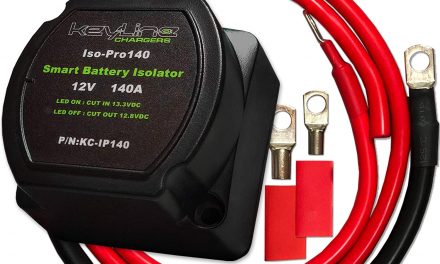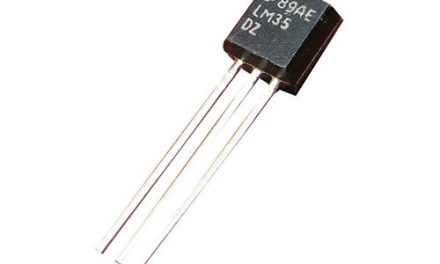It is hard to imagine that we once lived without computers. In a world with no smartphones. Nowadays computers have found their way into all parts of our lives, assisting us in doing tasks such as writing, reading and even laundry!
This article will explain how computers have revolutionized our lives by giving an in-depth analysis of applications of embedded systems.
Before we begin outlining the embedded systems applications, let me start with the basics.
Table of Contents
What is an embedded system?
An embedded system is defined as a dedicated computer system that is designed to work for a single, or few specific functions often within a larger system. This therefore means these systems are built to function and operate with very little or no human intervention. In addition, they are specially designed with the key task to be accomplished in consideration, thus, allowing them to perform as efficiently as possible.
As a result, there are many applications of embedded systems as there are very many instances where a specialized embedded computer is needed, together with an instruction set made specifically for that application.
Characteristics of embedded systems
All embedded systems are designed to accomplish a specific task. This is a key feature that is considered in the various applications of embedded systems as the system designer would want a set of hardware and software which accomplishes the task using the least resources and in the least amount of time. A good example of this is a photo camera. A camera is designed to only take photos and videos. It cannot type a Microsoft Word Document, or browse on the internet.
Tasks are performed within a certain time frame. This is another desirable feature that is considered in the applications of embedded systems as the programmer in charge would want the system to perform the task within the time period given. This is because in some applications of embedded systems, a delay of just a second can be the difference between life and death e.g. in medical applications of embedded systems.
A minimal user interface is present. In some applications of embedded systems, there is no User Interface at all. A good example is a Bluetooth speaker. It contains an embedded system, but may not have a display at all.
User serviceability. In most applications of embedded systems, the user cannot change or upgrade the embedded system. This results in high reliability and stability. This is done based on the premise that the system will function for long durations without the user experiencing any challenges.
In almost all applications of embedded systems, there is a need for the system to connect to peripherals. This will allow the system to obtain inputs from the environment and perform the relevant actions, or display the relevant outputs through the output devices.
Applications of Embedded Systems
Embedded systems are used in a wide variety of technologies found across all types of industries. Here are a few applications of embedded systems.
Motor Vehicles
Most modern cars are made up of very many computers, or embedded systems, designed in order to perform different tasks within the motor vehicle. Some of the systems present perform basic utility functions, and some provide entertainment, or user interfacing functions. An example of this is the car radio player.
This is an embedded system that is designed and developed to “read” audio files from a Compact Disc, USB Flash Disk, or a Bluetooth device. A user interface is usually present to allow the user to perform functions such as repeating a particular song, skipping some songs, creating a playlist, and pausing a song.
Other applications of embedded systems in motor vehicles include: engine control, anti-lock brake systems, and steering controls.
Mobile phones
This is one of the most popular application of embedded systems. In mobile phones, there are very many embedded system that are present. These embedded systems allow the mobile phone to perform the functions such as calling, connecting to the internet, and Instant Messaging.
Industrial machines
In industrial machines, there are very many embedded systems present. A very good example is a vehicle assembly line robot. This contains an embedded system that receives input from the sensors and cameras, and produces and output through its actuators. In addition, embedded systems are used to monitor the status of critical equipment, such as generators in a power station.
Medical equipment
In this application of embedded systems, the desirable characteristics of performing tasks within a certain time, as well as high reliability make it quite suitable for use. The medical equipment contains multiple embedded systems to ensure that the equipment has no downtime.
Security systems
These contain embedded systems present to monitor the premises in which the security system is installed, and produce an alarm when one of the pre-set conditions are violated. They use keypads, sensors and cameras to receive information from the environment, and mainly produce output through a very loud siren.
Other Embedded Systems Applications
- Traffic Signal Control System
- Digital Cameras
- Automated teller machine
- Industrial robot
- Calculator
- Displays and Monitors
- Irons
- Home Automation System
- Elevators
- Security systems
- Video game consoles
- Motor and cruise control system
- DVDs
- Network cards and printers
- Industrial Temperature Control
- Personal digital assistants
- Defense and aerospace
- Microwave Ovens
- Digital alarm clocks
- Mobile computing and networking
- High Definition TVs
- System for Vehicle Tracking
- Image Processing
- Banking
- Wireless communication
- Washing machines
- Assembly Line Robotics
- Safety of automobile body and engine
- Set top Boxes
- Car entertainment and multimedia
Advantages of Embedded Systems
- The design and construction process makes them ideal for mass production. This results in their cost being quite low.
- They are made for specific tasks which results in greater efficiency.
- The embedded systems are designed to occupy the least amount of space. This makes them very portable.
- The systems are quite fast. In addition to this, they optimize the resources present e.g. memory, power. This makes them able to run for weeks without any human intervention.
Disadvantages of Embedded Systems
- Once the system has been designed and developed, it is very hard to make any changes to them. This therefore means that if there is a need to scale up the system, it will be quite difficult to change them to meet the new requirements.
- These systems are difficult to troubleshoot.
- The systems are hard to maintain.
- Taking a backup of the embedded files within the system can prove to be quite challenging.
Summary
In this article, I have focused on the applications of embedded systems. This started with an explanation of the meaning of the words “Embedded Systems.” The applications of embedded systems were given, together with the merits and demerits of the embedded systems.
Now that you are armed with knowledge, try identifying all the applications of embedded systems in your everyday life.






